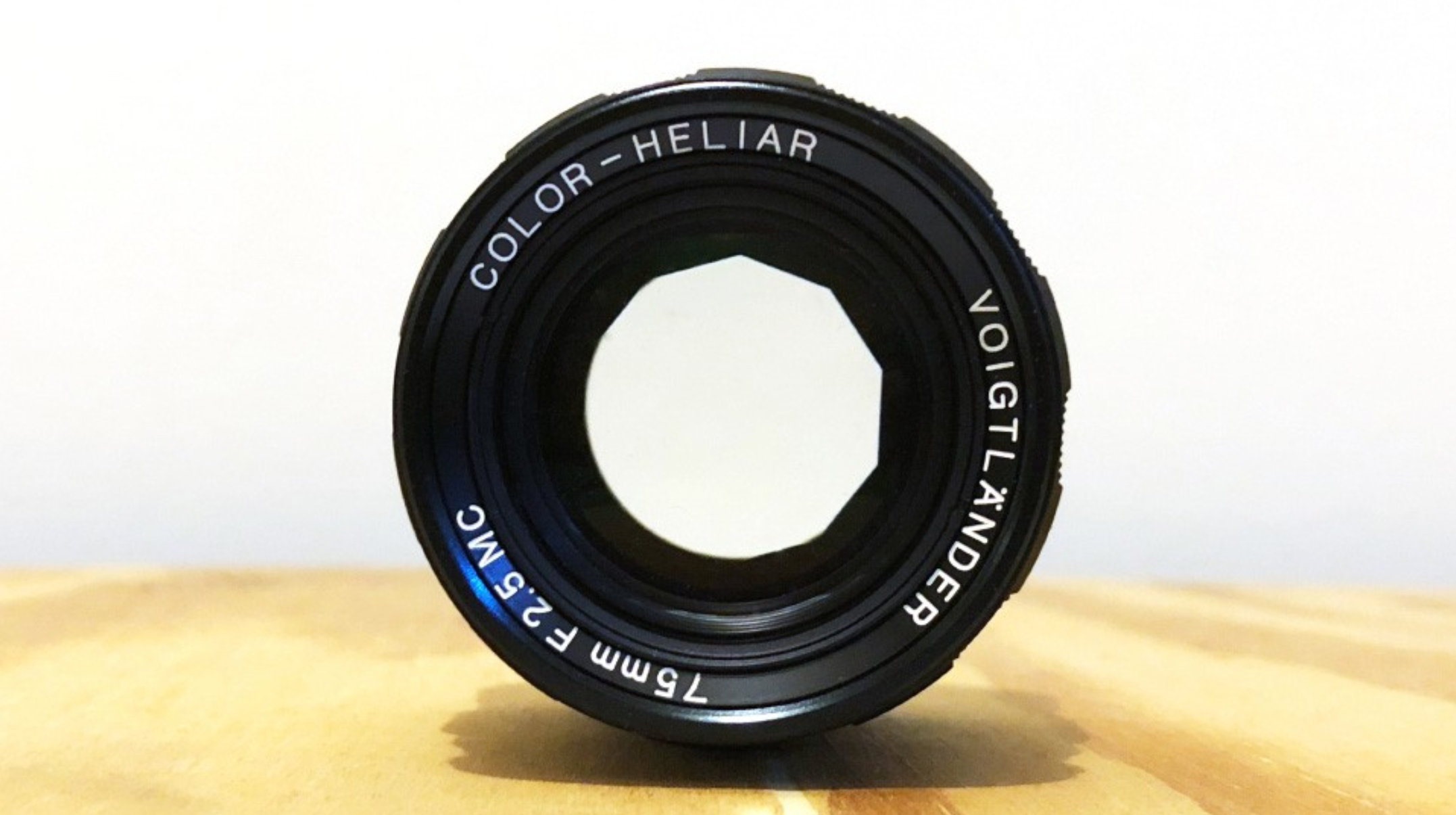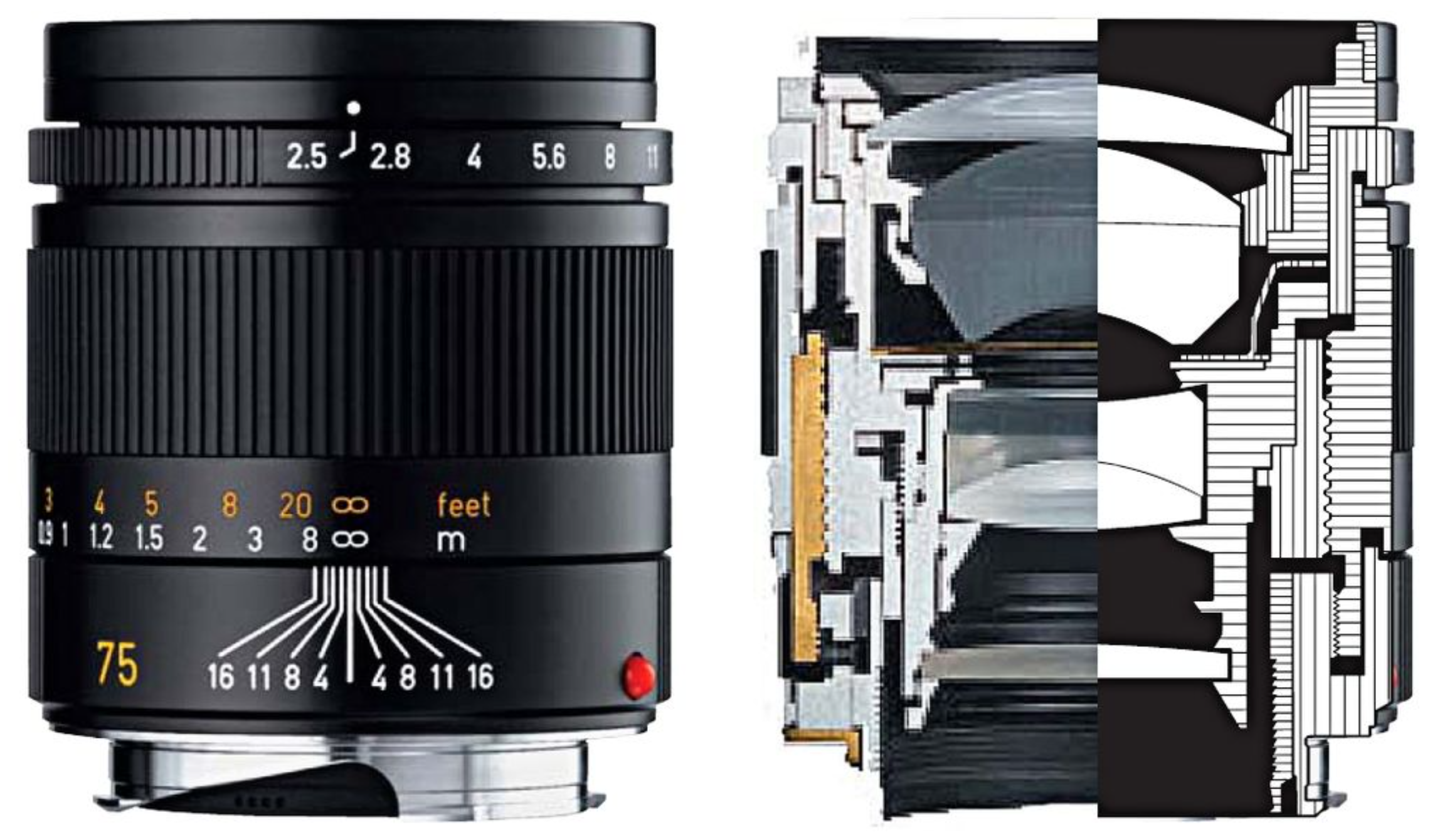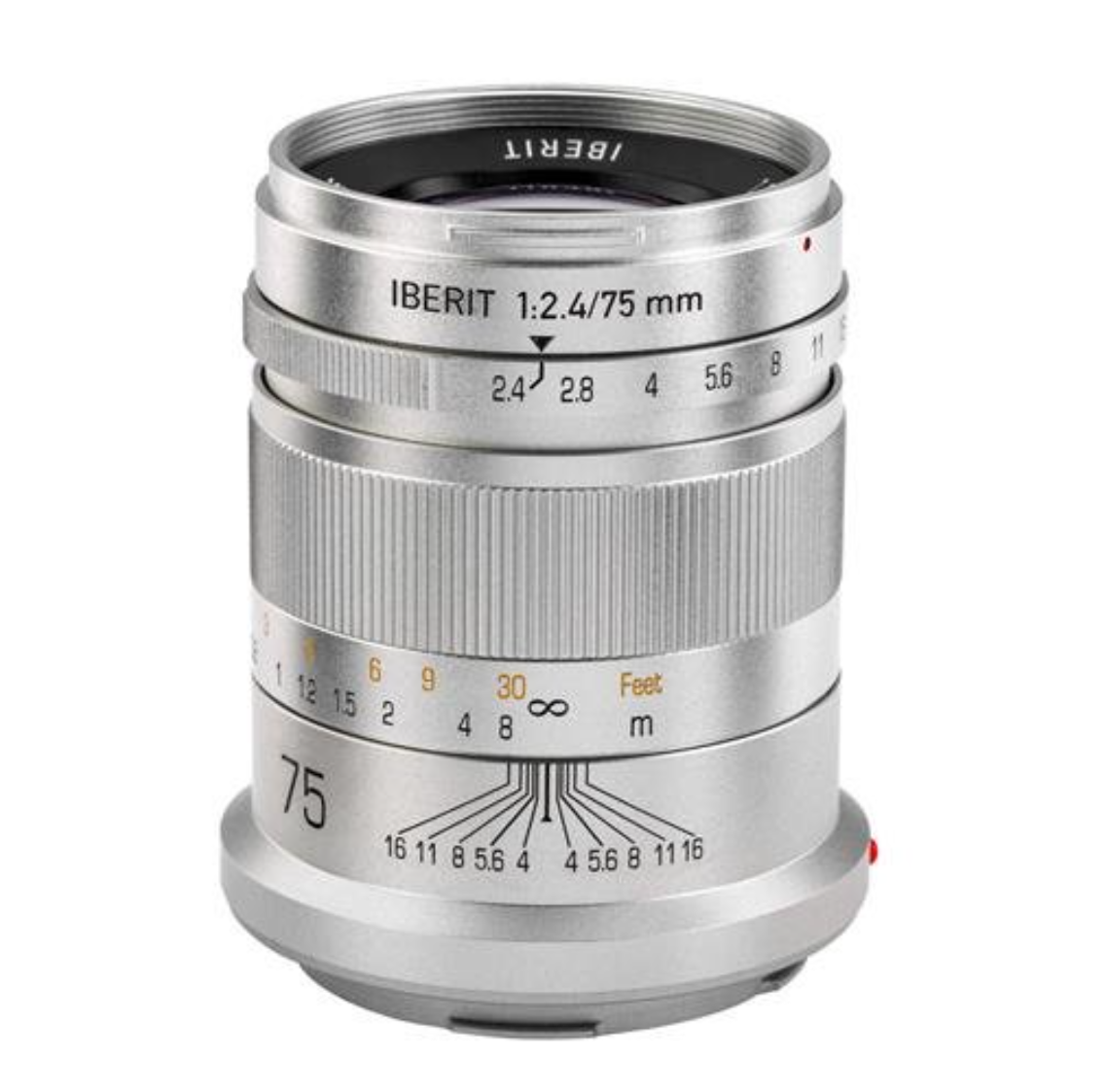The Goldilocks Lens: Leica’s Long Love Affair with the 75mm
Leica’s penchant for moderate telephoto lenses dates back to 1931 when Leitz unveiled two new ones in anticipation of the landmark Leica II (or D) of 1932: the first Leica with interchangeable lenses and a built-in coupled rangefinder. The 90mm f/4 Elmar, affectionately known as the “Fat Elmar” because of its rotund barrel, and the 73mm f/1.9 Hektor then the fastest Leica lens, were clearly aimed at expanding picture taking opportunities for Leica fans and enhancing the brand’s prestige.
Max Berek, the genius who created the legendary 50mm f/3.5 Elmar, designed both these beauties and he employed the same classic 4-element, 3-group “Tessar” design for the 90mm Elmar, which was held in high esteem and listed in the catalog for decades in both uncoated and coated versions. The 73mm f/1.9 Hektor was quite another story. Like his previous 50mm f/2.5 Hektor that was offered as an alternative “high-speed” normal lens on the Leica I and II, Berek based it on an unconventional 6-element formula consisting of 3 achromatized doublets separated by air spaces. It is pretty soft wide open, especially off axis, but it yields gorgeous rendition and surprisingly good detail at f/4 and smaller apertures.
Whatever its charms and deficiencies, the 73mm f/1.9 Hektor remained in production until 1942 with a total of 7,225 pieces having been made. While Leica has offered 85mm lenses (notably the 7-element, 5-group 85mm f/1.5 Summarex of 1943-1960 based on the Zeiss Sonnar formula), the coveted 105mm f/6.3 Mountain Elmar made before WWII, and a huge variety of 90mm lenses (including the current 90mm f/2.4 Summarit-M, Macro-Elmar-M 90mm f/4, 90mm f/2 APO-Summicron-M ASPH, and the 90mm f/2.2 Thambar-M soft focus, they really didn’t return to the 73mm—well 75mm—focal length until 65 years later in 2007.
How did we wind up with 50mm normal lenses?
Before I launch into recent and current 75mm Leica lenses, I think a few words on 35mm format (aka full-frame) focal lengths and where they came from is in order. It’s a strange and wonderful story. Around 1895, well before the advent of 35mm still-cameras cinematic pioneers were shooting movies on double-perforated 35mm film in the newly standardized horizontal 18 x 24mm cinematography format. The “normal” lenses on most of their hand-cranked movie cameras were 50mm or 2 inches in focal length, which is actually pretty close to a 100mm-equivalent telephoto on 18 x 24 mm.
What was the rationale? Well, most early movies were cinematic recordings of stage productions performed on a standard proscenium stage which, like the cine format itself, happens to have an aspect ratio of 4 units wide, 3 units high, and a diagonal of 5 units, all based on the Pythagorean formula of the façade the Ancient Greek temple! Using a 50mm “moderate telephoto” was a convenient way to record a stage performance because it eliminated any visually distracting elements beyond the stage itself (which were many and often quite chaotic!) from appearing in the movie.
When 35mm still cameras began to appear in the first decades of the 20th century, virtually all of them were fitted with 50mm “normal” lenses irrespective of whether they employed the standard 18 x 24mm cine format or, like the Leica, they doubled the format to 24 x 36 mm to enhance still picture quality. According to long-standing optical convention, the focal length of normal lens corresponds to the diagonal of the format, so the actual rectangular or square image format can be neatly inscribed in the lens’s image field, which is (generally) a circle. The true normal lens for the 24 x 36mm format is, therefore, the diagonal of the format, which is a smidgen less than 43.3mm, so the standard 50mm lens (actual focal length 51.6mm for many Leica rangefinder lenses) is definitely too long for a normal lens, but this did make it easier for optical designers to maintain high resolution and image quality in the corners of the field, especially back in the day before computers and aspheric surfaces. For the record, a nominally 50mm lens covers a 45-47-degree field of view depending on its actual measured focal length, and a 75mm lens covers a field of view of 32-33 degrees, a nice compromise between “reach” and ease of viewing and focusing with a multi-frame Leica range/viewfinder.
Leica’s 75mm f/2.5 Summarit-M released in November 2007 was the middle member of a trio of Summarit-M lenses (50mm, 75mm, and 90mm) that were simultaneously announced, all with f/2.5 maximum apertures, constructed entirely of spherical-section (non-aspheric) elements, and designed to offer lower cost optical alternatives for Leica M shooters. The Summarit name was an odd choice since it had been previously used only for the highly regarded 50mm f/1.5 Summarit of 1949-1960, a 7-element 5-group high-speed predecessor to the 50mm f/1.4 Summilux that was offered in screw-mount and M-bayonet versions made in either Wetzlar or Canada.
The 75mm f/2.5 Summarit-M is a 6-element, 4-group lens that was produced in 4 versions from 2007-2014, the main difference being the number of blades in the iris diaphragm. Versions 1 and 2 had 9 blades; versions 3 and 4 had 11. There were also minor cosmetic variations, and all were 6-bit coded for digital M cameras. Many Leica aficionados at the time dismissed the new Summarits, including the 75mm, as “discount lenses” and it’s fair to say that their mechanical construction, while quite good, is not quite up to the Leica standard of unsurpassed quality. However, when it comes to sheer image quality, gorgeous natural rendition, and beautiful bokeh the 75mm f/2.5 Summarit-M proudly upholds the Leica optical tradition, and is now considered a classic not only by many Leica M shooters but by legions of pros who are happy to mount it on other high-end digital cameras.
Today Leica fans have an embarrassment of riches when it comes to 75mm lenses in M-mount—there are no less than 3, each distinctively different and enticing in its own way. The original 75mm f/2.5 Summarit-M has been superseded by the 75mm f/2.4 Summarit-M, a 6-element, 4-group double Gauss design featuring anomalous partial dispersion and high refractive index elements to better control chromatic aberrations and field curvature. It delivers superb image quality throughout while maintaining much of the original 75mm Summarit’s beautiful rendition, has an 11-bladed diaphragm for enhanced bokeh, and focuses down to 2.3 feet (1:7.2).
The 75mm APO-Summicron-M ASPH. is an advanced 7-element, 5-group lens that employs one high refractive index aspheric element, anomalous partial dispersion elements, and a rear-floating-element design to achieve apochromatic color correction and outstanding sharpness and clarity over its entire focusing range, even wide open at f/2.0! It uses a double Gauss construction behind the aperture that’s similar to the 50mm f/1.4 Summilux-M to minimize distortion and increase overall contrast while enhancing sharpness and evenness of illumination. It also features a built-in extendable lens hood and focuses down to 2.3 feet for frame-filling headshots.
If any lens can claim the title of flagship of Leica’s current 75mm lineup, it’s surely the astonishing new super-speed 75mm f/1.25 Noctilux-M optimized for handheld low-light shooting and maximum depth of field control. A cousin of the landmark 50mm f/0.95 Noctilux-M ASPH, it employs a 9-element, 6-group design composed entirely of anomalous partial dispersion and low chromatic dispersion glasses. It also incorporates 2 aspheric elements and uses a rear-floating-element design for consistently outstanding imaging performance down to its minimum focusing distance of 2.8 feet. An 11-bladed diaphragm contributes to its beautiful rounded bokeh. It also has a built-in extendable lens shade and comes with a tripod adapter. I haven’t shot with this lens but if it’s anything like the 50mm f/0.95 Noctilux-M ASPH it will be a unique and valuable addition Leica’s unmatched optical arsenal.
Is there anyone else out there competing in the 75mm lens niche? Sure. The discontinued 75mm f/2.5 Voigtländer Color-Heliar in Leica screw mount is a decent if unremarkable alternative to the 75mm f/2.5 Summarit that’s now been superseded by the 75mm f/1.8 Voigtländer Heliar in M-mount, and there’s the 75mm f/2.4 HandeVision IBERIT for L-mount Leica mirrorless cameras, said to be a “simple 5-element, 5-group lens that yields classic image quality.” Nevertheless, I think it’s safe to say that Leica still dominates the 75mm lens category, and if you like a little telephoto but not too much, by all means, check out the current Leica trio.











